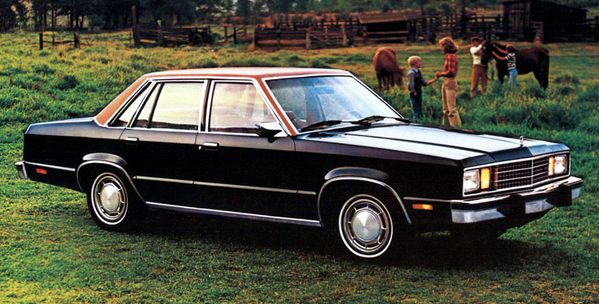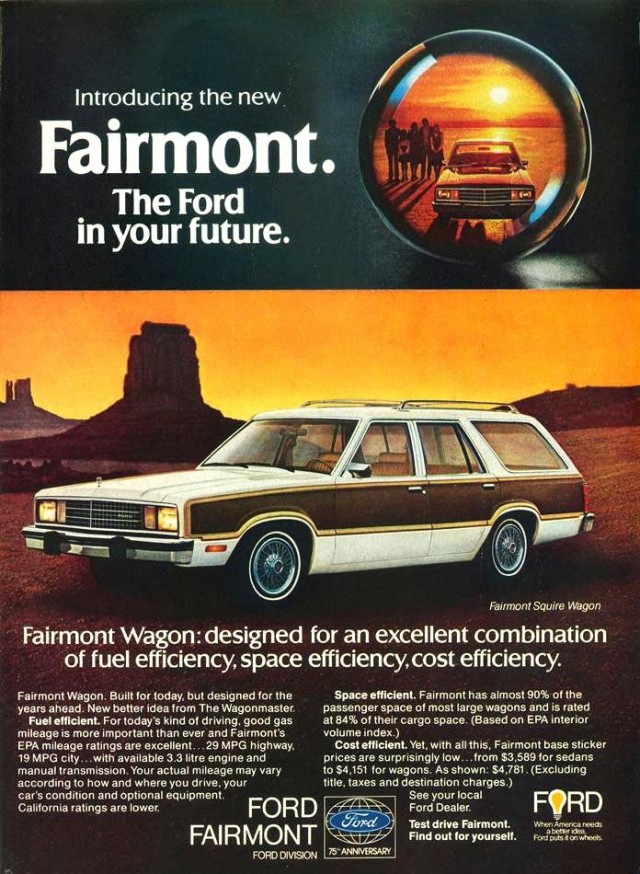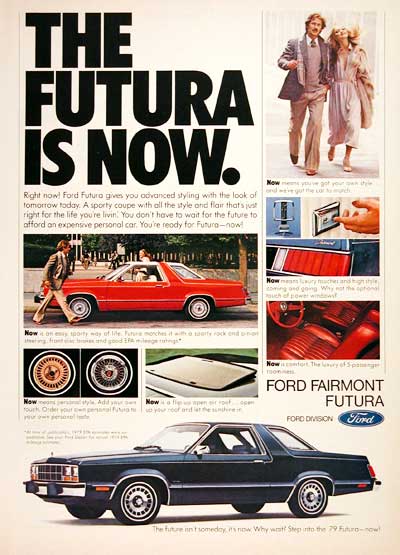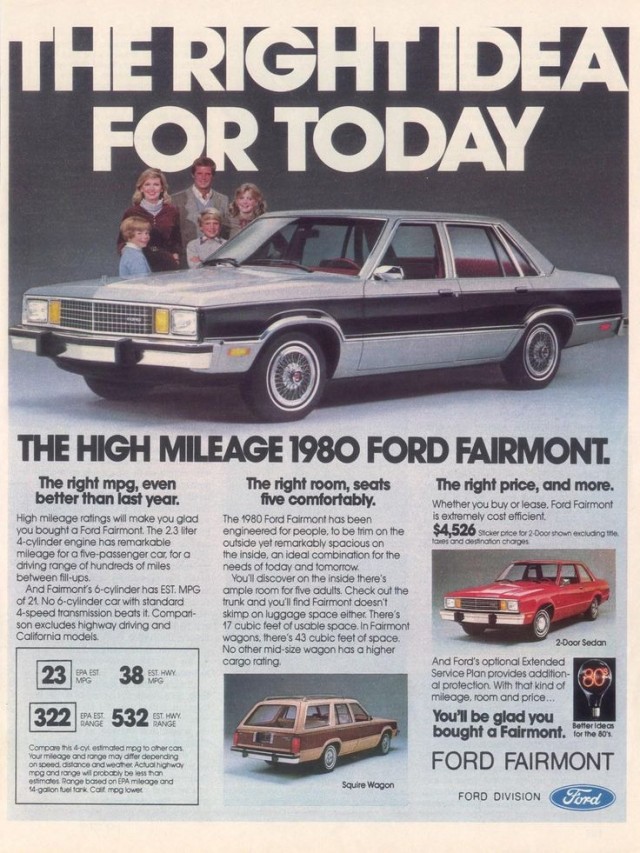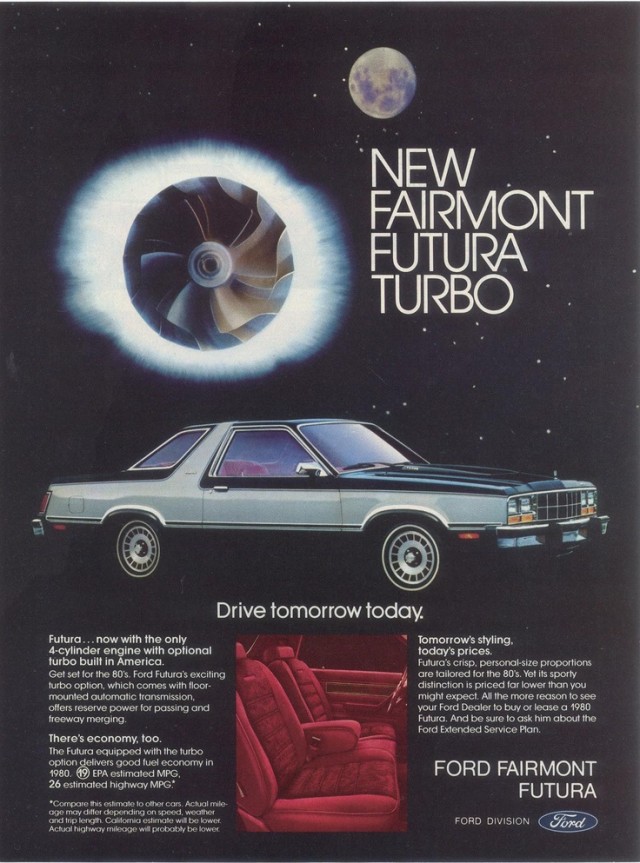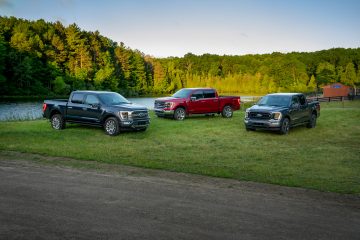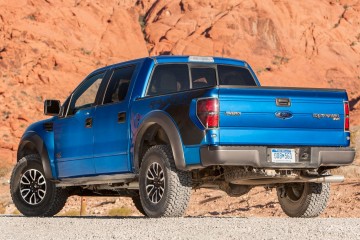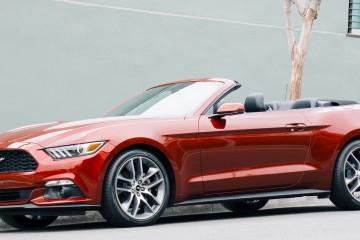1978 was a substantial year in history both in the United States and around the world. Grease was released in theaters, Garfield debuted in newspapers, and Argentina won the world cup. A few other things happened, the first test tube baby was born, the Afgan Civil War began, Ted Bundy was arrested, but all of that pales in comparison to the debut of the Ford Fairmont.
As Ford’s replacement for the Maverick, the Fairmont was to usher in a new era of style, performance, and efficiency. If that sound familiar it’s because those words are used by every automaker, every time they introduce a new model. However, this time around, Ford really did step their game up, and the Fairmont was well received by journalists and the public alike.
It was the first application of Ford’s new Fox platform, which would be used by the Mustang, Thunderbird and Lincoln Continental, among other cars, for a number of years. It featured unibody construction vs the body-on-frame setup of larger Ford vehicles, though it did retain a rear wheel drive setup. From the start, the platform was designed to work with various engine sizes, which was perfect since the Fairmont was offered with an inline four, inline six, and two V8s.
In addition to having four engines to choose from, buyers were also offered a variety of body styles. The Fairmont was available as a two door coupe, four door sedan, a wagon, and my personal favorite, an odd looking two door notchback sedan. Design wise, no one would say the Fairmont is a particularly pretty car. It doesn’t really have any defining features that would make it stand out in a crowd of late Malaise Era vehicles, but it does seem to have more personality, especially when the Futura option box was ticked.
Borrowing the name from the now classic Ford Falcon, the Futura trim level Fairmont had a funky roofline styled after the ’77 Thunderbird, with a little bit of a ’55 Crown Vic mixed in for good measure. Think of it as a mashup of Rod Stewart and Elvis. A half baked idea to bring together two things that are fine on their own, but really weird when stuck together. With the addition of a chrome molding strip across the roof at the B pillar and the aggressively angled rear window leading into a flat trunk, it’s easy to see why Ford thought that maybe the Durango could be a thing.
In 1981 all Fairmonts received the quad-headlight fascia used on it’s stablemate the Mercury Zephyr, as well as additional convenience equipment. No surprise there since the up market Granada was now on the Fox platform and the Fairmont had a new role to play, the capable, well appointed entry level car. This was essentially a death sentence for and for 1982 the station wagon model was moved up to the Granada, no improvements were made to the Fairmont, save for the Futura trim being made available on sedans. With the Malaise Era drawing to a close in 1983, the Fairmont was phased out of production, and the use of the Fox platform would soon follow suit, except with the Mustang, where it would soldier on until the rise of grunge music and debut of The Real World.
The craptastic, though massively successful, Ford Tempo replaced the Fairmont. It’s front wheel drive platform and “radical” aerodynamic styling signaled the end of Malaise Era thinking and the arrival of the future. Each of the Big 3 had a car like this that debuted in 1983, though the Tempo was by far the most successful in the long run. The Fairmont was quickly forgotten, especially since the designs were so different. Having come of age long after the boxy designs of Detroit had been abandoned, I’ve only recently begun to appreciate the oddities of the Malaise Era. The Fairmont Futura is car I wasn’t even aware of until a few months back, but thanks to a love of vintage advertising, I came across it. As far as oddball collector cars go, a 1980 Fairmont Futura Turbo has to be really high up on the list.
(Article continues below)

